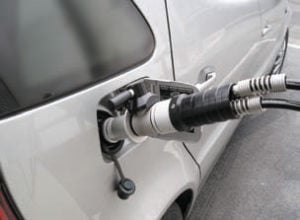No one knows with absolute certainty what transportation patterns in the United States will be like once over the Corona Virus pandemic or whether we’ll return to travel patterns exactly the way they were pre-pandemic.
Speaking to this, a team of researchers from two universities (Vanderbilt and Cornell) got to work to consider several possible scenarios. Information as it pertains is presented in a recently released report.
In their report, The Rebound: How COVID-19 Could Lead to Worse Traffic, by Yue Hu, Will Barbour, Samitha Samaranayake and Dan Work, in the “A Few Take Home Messages” subsection, as the second among a total of four selections, suggested: “Covid-19 cleared the streets in many communities. As we reopen, traffic will eventually rebound. If transit ridership does not return, travel times will increase, sometimes dramatically.”1 And, it is this so-called “street-clearing” that has resulted in considerable clearing or cleaning of different kind, in this instance the reference being to the air. A drop in harmful emissions of up to 50 percent in some areas has been recorded.
Meanwhile, a second team of experts more than a decade ago wondered about how traffic would be affected if transit were to completely cease to exist. Quite interestingly, it should be noted, the two different teams’ views on this are not that far apart. In other words, both teams being on the same page regarding the “travel times will increase” aspect, but, apparently at odds, on the other hand, where the “sometimes dramatically” notion is concerned.
As a case in point, according to The Road More Traveled: Why the Congestion Crisis Matters More Than You Think, And What We Can Do About It, book authors Ted Balaker and Sam Staley, in effect, concluded that there would be no great traffic impact, reasoning that because the bulk of transit users lack access to automobiles, would either come to depend more on their feet to get them where they need and/or want to go or would just commute/travel less often.2
In which case, in regard to there being a corresponding increase in roadway traffic or congestion such would, in fact, based on the latter view, be insignificant.
‘Right back where we started from’?
In taking all of that into consideration, please know this: Once the pandemic ends (and indications are that that appears to be the consensus), by monitoring motor vehicle and rail conveyance movement, this will provide a much more accurate picture of just what the on-the-ground transportation and travel situation then is. Of that we can be sure.
Then again, that on-the-ground transportation and travel situation could be such that a whole new mobility era, paradigm develops. There could be increased interest in telecommuting. The people that can work from home but aren’t doing so currently either because their households are not set up for this sort of thing or they have not gotten the okay by employers, will they, well, respectively, get and be allowed to get onboard? And, what about that of the folks who have no choice but to work from home because of stay-at-home/shelter-in-place restrictions, will that situation be sustained? If so, to what degree will that be?
Though quite prematurely speaking, but assuming post-pandemic that pre-COVID-disease traffic levels and patterns resume, or in other words, picks up from where it left off, will those out-and-about in vehicles favor so-called “self-isolating” motoring?
Already there appears to be movement in that direction. And, if that transpires, the number of new car sales year over year could accelerate. Up to this point, the trend had been approximately 17 million new motor vehicles purchased in the U.S. per year.

Using a five percent new zero-emissions vehicle purchase rate in relation to the whole, what we’re looking at each year are at least 850,000 new ZEVs sold. Assuming an increase in new vehicles sold, there is no guarantee that those new ZEV sales percentages will hold.
And, if that’s the case not only will driving in this country be further slowed, but a substantial gain in surface-transportation emissions could result, a hard reality that could very well become the status quo. As an aside but as it relates, in Norway roughly 35 percent of all new car sales are ZEVs. That percentage is purported to rise to 50 percent by 2035.
Expanding on that thought, in Europe as a whole, thinking might be more along the lines of high-speed train travel, not so much as a substitute for automobile use as it would be used to supplant domestic air travel, that is, for distances of say between 100 and 1,000 miles. Renewably powered HSR, it should be noted, is emissions-free. That, too, is reality.
For those so-inclined, physical distancing measures could be maintained – there could be HSR carriages specifically provided for just this very purpose.
Interesting to note is that the 160 mph Acela trains are slated to come on line on Amtrak’s 457-mile-long, Boston to Washington, D.C. Northeast Corridor (NEC), in 2021.

That which is unknown, that which is known
So, it all comes down to this question: Post-COVID-19 pandemic, surface-transportation profile-wise, what will it be?
More, obviously, will be learned as time goes on.
Notes
- Yue Hu, Will Barbour, Samitha Samaranayake and Dan Work, The Rebound: How COVID-19 Could Lead to Worse Traffic, the “A Few Take Home Messages,” subsection. Representative URL: https://lab-work.github.io/therebound
- Ted Balaker and Sam Staley, The Road More Traveled: Why the Congestion Crisis Matters More Than You Think, And What We Can Do About It, 2006, p. 45
Images: Wikimedia Commons (upper); Chao-Hwa Chen (lower)